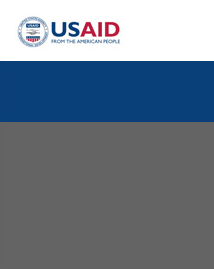PRESIDENT’S MALARIA INITIATIVE-LIBERIA ![]() (pdf - 281k)
(pdf - 281k)
In 2008, Liberia was selected as one of the 19 focus countries benefiting from the President’s Malaria Initiative (PMI), which is led by USAID and implemented together with the U.S. Centers for Disease Control and Prevention. PMI was launched in 2005 as a 5-year, $1.2 billion initiative to rapidly scale up malaria prevention and treatment and reduce malarai-ralated mortality by 50 percent in 15 high-burden countries in Sub-Saharan Africa.
The 2008 Lantos-Hyde Act extended funding for PMI, and marked the adoption of PMI’s revised strategy to achieve Africa-wide impact by halving the burden of malaria in 70 percent of at-risk populations in 18 sub-Saharan Africa countries.
PMI’s Strategy for 2015-2020 takes into account the progress over the past decade and the new challenges that have arisen. Malaria prevention and control remains a major U.S. foreign assistance objective and PMI's Strategy fully aligns with the U.S. Government's vision of ending preventable child and maternal deaths and ending extreme poverty
Following Ebola outbreaks, PMI and Implementing partners supported the Ministry of Health (MOH) to adjust programs and help maintain access to malaria prevention and treatment. As part of post-Ebola recovery, PMI is also supporting the restoration of services throughout the country to increase access to adequate malaria prevention and treatment.
Current Activities
In line with Liberia’s National Malaria Control strategy, PMI supports four major malaria prevention and treatment measures:
- Diagnosis and treatment of malaria episodes using Artemisinin-based combination therapy (ACT) and Rapid Diagnostic test kits (RDT);
- Procurement and distribution of Long Lasting Insecticide Treated Nets (LLINs);
- Prevention and management of Malaria during Pregnancy (MIP); and
- Vector monitoring and surveillance
Planned Outcomes
- 90 percent of households with a pregnant woman and/or children under five will own at least one insecticide-treated net ITN;
- 85 percent of children under five will have slept under an ITN the previous night; and
- 85 percent of pregnant women would ill have slept under an ITN the previous night








Comment
Make a general inquiry or suggest an improvement.